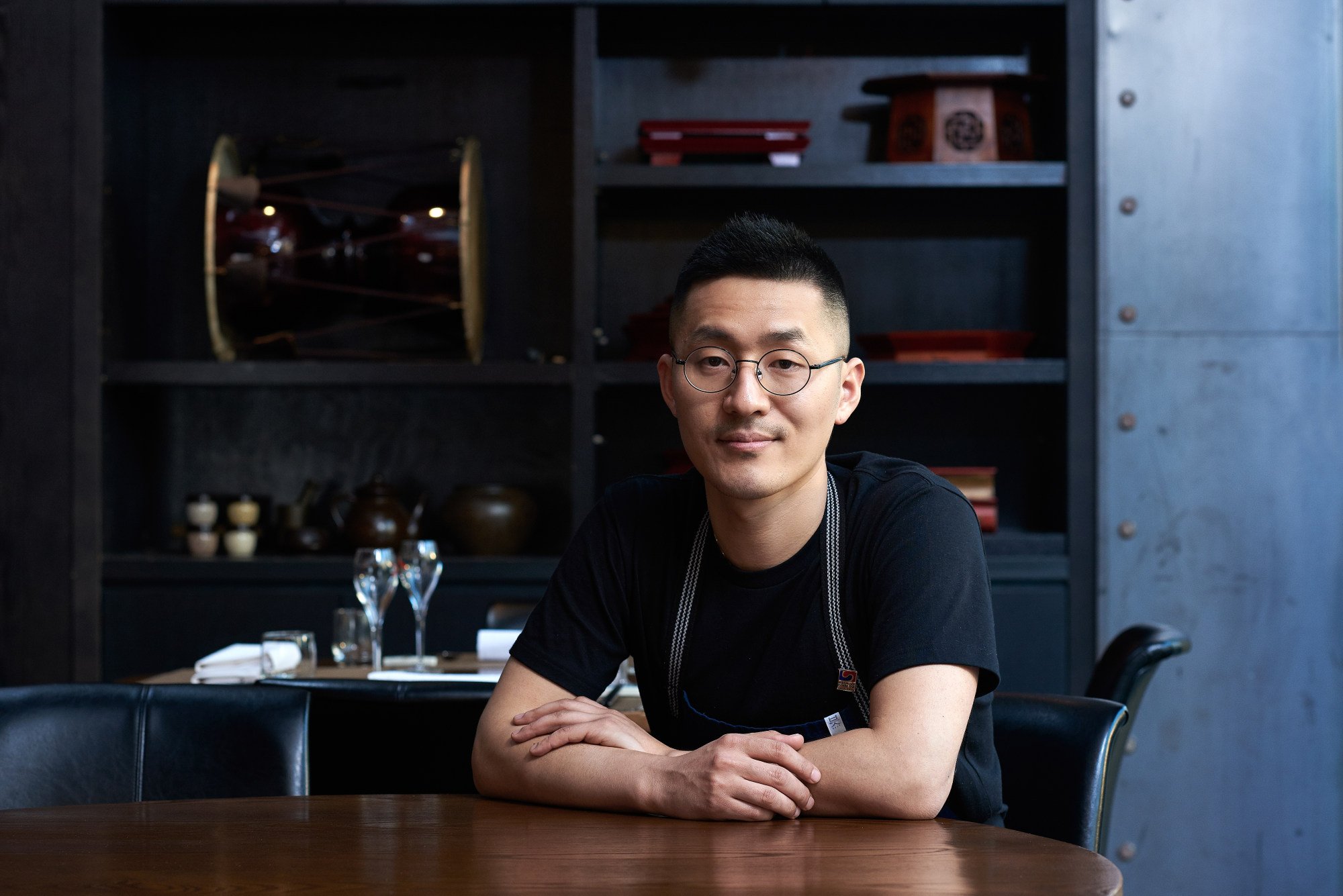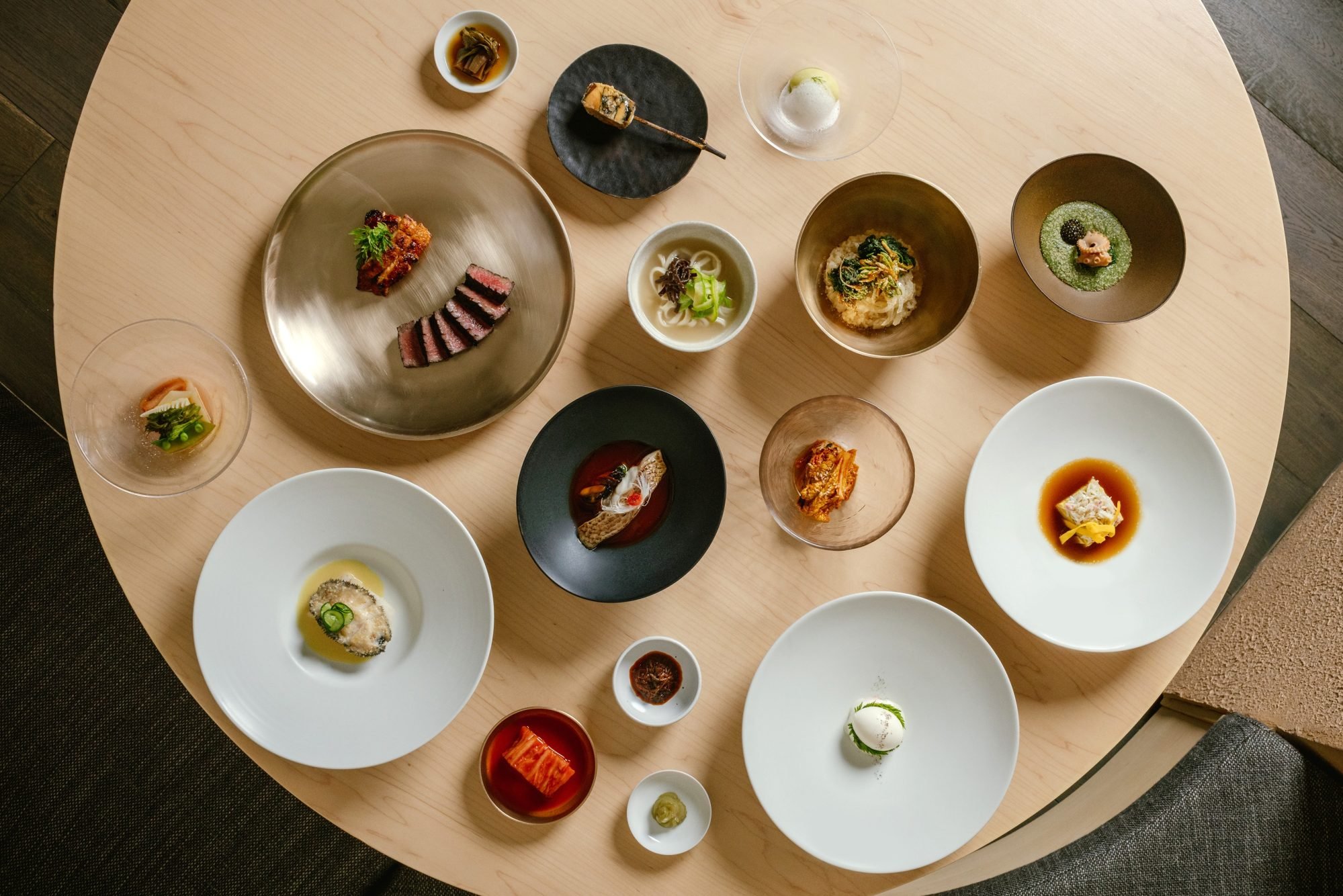
Profile | Head chef of Hong Kong’s only Michelin-star Korean restaurant on how rediscovering flavours of his past and ‘making mistakes’ was key to his success
- Steve Lee was chosen as head chef of Hansik Goo by its founder, his mentor Kang Min-goo, in 2020, and soon led the restaurant to Michelin-star status
- The South Korean talks about his journey from Seoul via Sydney, and rising to the challenge despite having no prior professional experience of Korean cuisine
“The first thing that got me was just how expensive everything was,” says chef Steve Lee of Hong Kong. “Then I was surprised by the heat.
“The only thing I knew about Hong Kong before moving here was that it is located near Southeast Asia and that it’s a shopping destination. So what I had pictured was an affordable, inexpensive city to live in.”

Lee then went on to receive the red book’s inaugural young chef award in the 2023 edition for Hong Kong and Macau, which recognises those “whose exceptional talent and great potential have impressed the inspectors”, according to Michelin.
“I really don’t know how I was chosen for the young chef award,” Lee says bashfully. “I was simply working hard on what I do and was given this gift.”

Thinking back, Lee says his path to success over the past three years was paved with challenges, failures and lessons learned. In 2020, the then 29-year-old had been entrusted with the role of head chef at a restaurant in a city he was completely unfamiliar with.
Even more surprisingly, until that point he had never actually professionally cooked Korean cuisine.
“It was an opportunity to grow as an individual,” Lee says. “There have been ample failures and mistakes, but as the saying goes, failure is definitely the stepping stone to success. There were so many lessons I learned through the process and now I feel like I’m Steve 2.0.”
Fans of Korean food in Hong Kong have more choice than ever
Both attended Kyonggi University, in Suwon, South Korea, although Kang is Lee’s senior by seven years and was already a respected chef by the time Lee started college.
As a student, Lee dreamed of working with Kang one day. That dream came true – albeit only partially – when he got a job at Mingles after graduating. He was hired as a member of front-of-house staff but would also go into the kitchen to help out from time to time.

Less than a year later, Lee moved to Sydney, Australia, where he stayed for seven years, working for the Bentley Restaurant Group. Still, his mentor-mentee relationship with chef Kang continued.
“I always met up with Kang whenever I returned to Korea, as he was really the only senior Korean chef that I was close to,” says Lee. “He would always invite me over to Mingles, sympathetically listen to whatever situation I was in in Australia and give some advice.”
When Lee decided to return to Korea after obtaining permanent residency in Australia, he asked Kang if he could rejoin Mingles, but this time as a chef. Kang had a better idea.
Trying to cook Korean food for the first time was difficult for me. The way I thought was too Western cuisine-centred
“I think he saw that I had the passion to keep trying new things, and appreciated the fact that I stayed working for the same restaurant group for seven years. He saw my persistence in that,” Lee says. “He had also been looking for someone who could speak English, with some experience abroad.”
Despite Kang’s trust, Lee says that becoming head chef posed a novel challenge he was not fully ready for, as it required him to not only lead the kitchen but also be the middleman between it and management.

“Before, as a chef de partie, I just had to produce good dishes according to what the head chef wanted. It was only through making a lot of mistakes that I learned how to perform the role of head chef,” he says.
Lee had to make adjustments inside the kitchen, too. He had got used to Australian kitchens, and that did not mesh well with Hong Kong and Korean staff members.
“Initially, there were clashes that came from different working cultures, as I was used to high-pressure ways of communicating and working. There were even some staff who promptly quit,” Lee admits. “Now when I look back, I think I could have done a better job.
Korean temple food and the Buddhist ethos at home: it starts in the kitchen
“From time to time I chat with the staff I worked with before and I apologise to them for having not been that great. But then they tell me that it was just a process of growth for all of us.”
Transitioning into Korean cuisine required Lee to find the right balance between drawing from his own culinary roots and understanding the food and background of Kang. While Lee’s vision for the food was more contemporary, he says, Kang deeply valued retaining the core as authentically traditional as possible.
Also, Lee had grown more familiar with using Western cooking techniques such as sous vide (cooking at lower temperatures for a longer time) during his time in Sydney, along with using a lot of Japanese ingredients and seasoning – something that was trendy in Australia at the time.
How many Michelin-star chefs are there? None, actually – here’s why
“Trying to properly cook Korean food for the first time was very difficult for me. The way I thought was too Western cuisine-centred. Every time I cooked a new dish, chef Kang would tell me that it’s not truly Korean,” Lee says. “I went to a lot of restaurants in Korea that chef Kang recommended, and tried to reconnect with the memories of flavour from when I was young.”
Lee believes the dishes at Hansik Goo have stayed true to Kang’s vision of serving authentic Korean cuisine, and he tries to maintain the integrity by bringing as many ingredients as he can from Korea. Having a kitchen manned by a full brigade of Korean staff also helps, he says.
Still, Lee’s dishes have a slight twist, given that this is, after all, Hong Kong.

“I often go out to markets and think about what Hong Kong ingredients can be used. For example, we use prawn roe in some of our dishes to add that savoury flavour. We’ve also been experimenting with dried abalone for our new menu,” Lee says, adding that he hopes to hire more local staff in the future.
The past three years in Hong Kong have been special for Lee not only because of the accolades he has received but also because his long-term mentor recognises his growth.
“Chef Kang used to give me a lot of specific feedback in the early days of the restaurant – even down to the nitty gritty of how I should place the garnishes. Nowadays he tells me that I’m doing a good job, and I feel like he has trust in me,” he says.
Korean chef on his ‘very simple’ food and the joy of being in Hong Kong
Lee’s nearly decade-long adventure, which began with his dream of working with Kang, has taken him to unexpected places, but there is one thing he now knows for sure: he wants to continue making Korean cuisine.
“I don’t fear taking up new challenges, and my goal is to one day have my own Korean restaurant somewhere in the world,” he says.
Lee has one final message to all those who believe Korean cuisine is easy to make.
“Korean cuisine may look simple at a glance. But behind the minimalist presentation is a multi-step preparation of ingredients and making of rich broths while incorporating the five cardinal colours [of Korean culture, referred to as Obangsaek: blue, red, white, black, and yellow].
“All of this requires a lot of love and care – almost like motherly love.”

